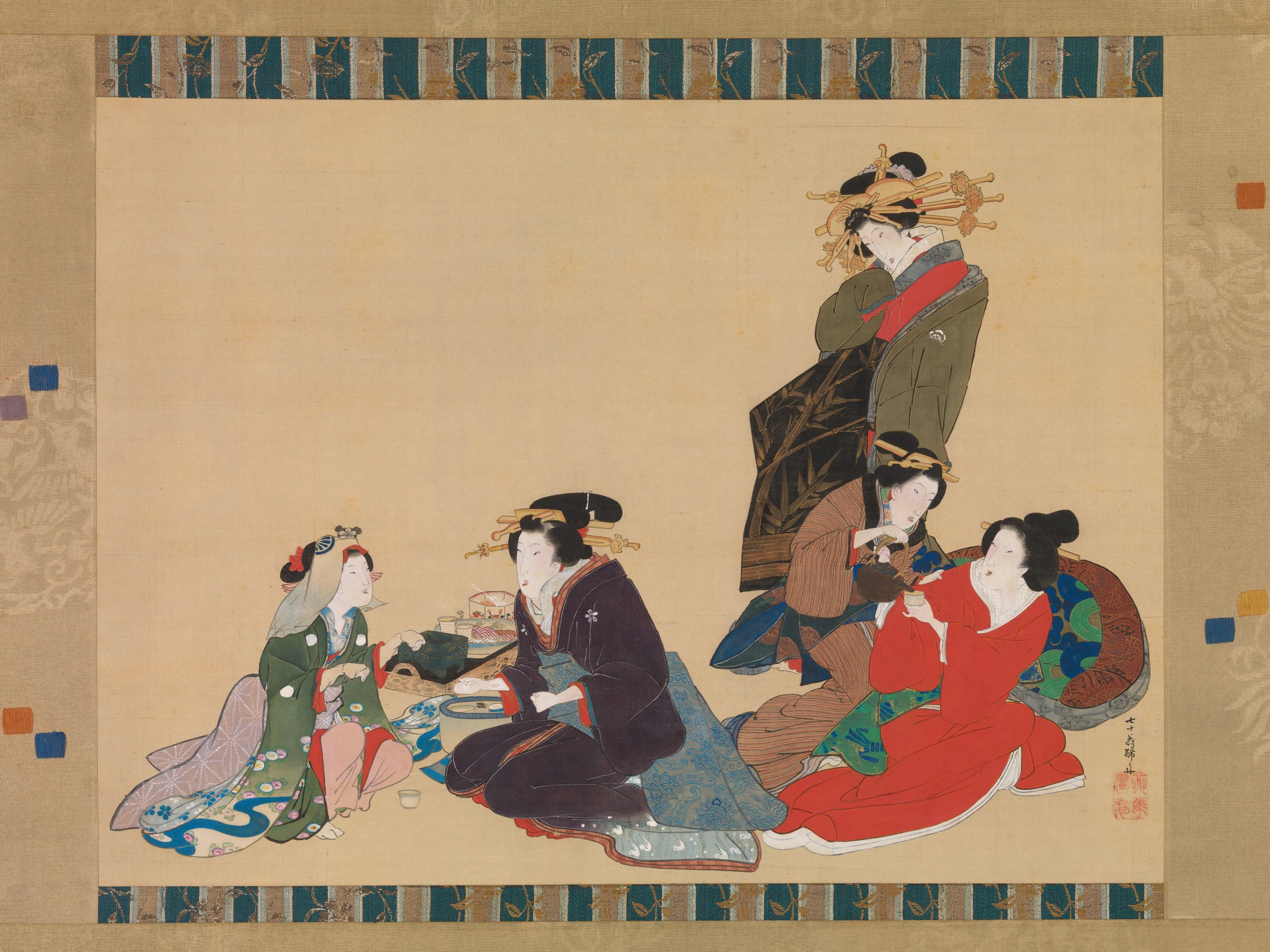Gameplay
The traditional game of kitsune-ken (‘fox-fist’) references the Kitsune’s powers over us. The game is similar to rock paper scissors, but the three hand positions signify a fox, a hunter, and a village headman.
Young Women Playing Kitsune-ken (Fox Game)
Artist: Suzuki Harunobu
Period: Japanese, ca. 1768–69
Medium: Woodblock print; ink and color on paper
Dimensions: 11 1/4 × 8 5/8 in.
Collection: The Metropolitan Museum of Art
The spaciousness of the interior in the cover print extends to the exterior space of the veranda and the blossoming cherry trees beyond the railing, creating a pleasant atmosphere. The joyous mood is echoed by two figures in the foreground playing the fox game (kitsune-ken). Another young woman, with a three-stringed samisen in her left hand, watches their game. On the floor between the contestants are a kettle and a stand holding a sake cup.
The basic idea of kitsune-ken is that three hand gestures symbolize a village chief, a gun, and a fox. Each has a different potential: the chief is superior to the gun since he employs it, the gun to the fox because it can kill the fox, and the fox to the chief because it can bewitch him. The use of the hands (ken means "fist") leads to a number of combinations. In this print, the player on the right who makes a gesture of shooting a rifle defeats her opponent at the left, whose limp-wristed gesture signifies a fox. The game continues until one player wins three times in succession.
The loser in this print will have to drink a cup of sake.
Five Beauties
Artist: Teisai Hokuba
Period: Edo period, ca. 1840
Medium: Hanging scroll; ink and color on silk
Dimensions: 15 3/8 × 20 3/4 in.
Collection: The Metropolitan Museum of Art
The two women on the left play a hand-gesture game called kitsune-ken (fox fists) in which gestures representing a supernatural fox (kitsune) defeat those of a village head (shōya), who defeats a hunter (ryōshi), who in turn defeats the fox. An apprentice courtesan serves tea while a high-ranking courtesan makes a grand entrance. A feast of sashimi and other delicacies sits nearby.
Teisai Hokuba, one of the earliest and most talented pupils of Katsushika Hokusai (1760–1849), focused his efforts on surimono (privately commissioned woodblock prints), book illustration, and deluxe paintings of beauties like this one. His signature indicates that he was seventy years old when he painted it, near the end of his long career.
Foxfire Emerging from Inakamura
Deck: Edo Jidai Youkai Karuta
Medium: Playing card
Reissue: 1998
This early 19th-century obake karuta (‘ghost’ or ‘monster’ cards) features a kitsune. A unique Edo period (16th-19th centuries) variation of Iroha karuta from Tokyo, this game involves matching folklore clues to mythological creatures. Players collect cards corresponding to riddles under a referee's guidance, with the winner having accumulated the most. The game identifies the Japanese alphabet, evident in the characters on the corners of these contemporary cards. Obake karuta reflects Japan’s enduring fascination with classifying and imagining monsters, particularly the Fox Spirit.


